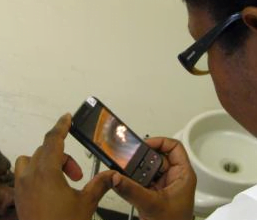
This fella moves faster than eVisit adoption.
When I first started working in healthcare I was told that innovations can take a long, long time to be adopted. Now I’m old enough to have experienced it for myself.
The big news in the Seattle Times this week?
“To cut medical costs and diagnose minor ailments, WellPoint and Aetna, among other health insurers, are letting millions of patients get seen online first.”
“In a major expansion of telemedicine, WellPoint this month started offering 4 million patients the ability to have e-visits with doctors, while Aetna says it will boost online access to 8 million people next year from 3 million now.”
This has been a long time coming, and we’re still at the early stages of adoption, with plenty of naysayers remaining. I first worked on eVisits (or webVisits) in 2001, when Healinx (now RelayHealth) commercialized them. Researchers at Stanford and UC Berkeley studied the webVisit and concluded that their use cut total medical costs while improving patient and physician satisfaction. Here’s a press release from January 2003 on the study (Final Results: webVisit(SM) Study Finds RelayHealth Reduces Cost of Care While Satisfying Doctors and Patients).
Here’s what I said about it five years ago (eVisits continue their slow, steady rise) –before the iPad, Meaningful Use, or the Affordable Care Act:
It’s interesting to be in late 2009 and see e-visits described as a “disruptive innovation” that “the medical establishment is fighting.” It’s a sensible concept, fairly straightforward to implement, efficient, and effective for certain situations. Yet growth has been slow. Part of the issue is that it’s health care we’re talking about, where innovation tends to be retarded when it involves changing physician practices. Another, related problem is that there’s no great financial incentive for the physician or patient to make a change. Health plans that do cover e-visits often charge the same co-pay for patients as for in-person visits, even though they often reimburse physicians at a lower rate.
My guess is that over the next decade we’ll see e-visits become common. Why?
- Adoption will follow the typical S-shaped curve, and we’ll soon get to the steep climb almost regardless of other changes
- More patients and physicians will simply expect to communicate online, as they do in every other area of their personal and professional lives
- Payment systems will evolve to support e-visits, rather than penalize them
- Adoption of electronic systems in physician offices in general will enable e-visits
- Supporting technologies will evolve and emerge. These include remote monitoring, higher bandwidth, personal health records, and mobile applications.
Enjoy the next decade and don’t expect things to change too quickly. Halfway into the decade these five factors are still playing out. Having said that I could probably have just reposted the article and changed the date and no one would have noticed.
Will things speed up dramatically over the next five years? In 2019 will we still be reading articles about this “novel” approach? I hope not but fear that we may.







